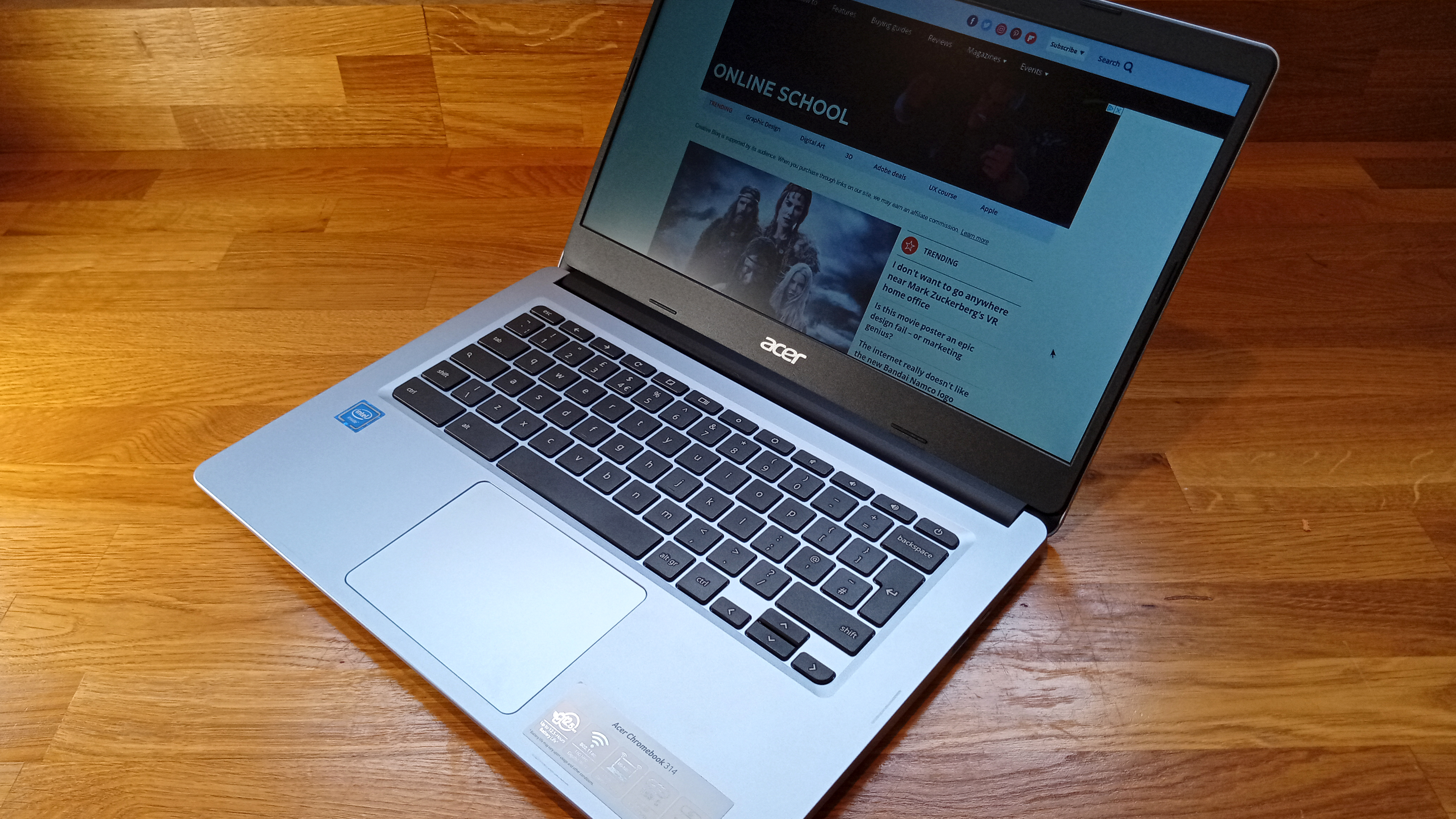Our Verdict
The Acer Chromebook 314 is easy to use, has a great battery life and is more than capable of running multiple apps. This is a great Chromebook for students as it's durable and Google's suite of office apps are excellent. It can be a found wanting for art projects, and you may want to consider upgrading to the touchscreen model. As an entry level Chromebook, it's worth a look.
For
- Good value for money
- Excellent for blogging and video
- Fantastic battery life
Against
- Build quality could be better
- We'd prefer a better screen
Why you can trust Creative Bloq
There's a proud workhorse feel to the Acer Chromebook 314. It's not the highest spec Chromebook on the market and it's not the most feature rich, but this is a solid alternative to a Windows laptop, has a broad 14-inch screen and is just about compact enough to slip into a small bag.
The best Chromebooks on the market have touchscreens and we love the overpowered Google Pixelbook series in particular that feature Intel Core i7. But while the Acer Chromebook 314 is found lacking when compared to those beefier and more costly Chromebooks, this compact machine knows who it's for; this is one of the best laptops for students on the market, and definitely one of the best Chromebooks for students.
Acer Chromebook 314 configuration:
CPU: Intel Celeron N4000 1.1Ghz (dual-core)
Graphics: Intel UHD Graphics 600
RAM: 4GB
Memory: 32 GB flash memory
Screen: 14-inch LED; high definition 1366 x 768 pixels
Storage: 32GB eMMC
Ports: 2 x USB-A; 2 x USB-C; MicroSD; Audio jack
Connectivity: Wireless IEEE 802.11a/b/g/n/ac; Bluetooth 5.0
Cameras: HD webcam
Weight: 3.75 pounds (1.7 kg)
Size: 12.8 x 9.1 x 0.78 inches (32.5 x 23.1 x 2 cm; W x D x H)
The Acer Chromebook 314 works within the limitations of its components – notably, an Intel Celeron N4000 1.1Ghz (dual-core) CPU and an Intel UHD Graphics 600 chip – to deliver a machine capable of running most apps, streaming video and processing multiple browser tabs, while maintaining a long battery life. In my test, which involved working with numerous art apps and video streaming apps, I found it ran for 10 hours with ease.
The large screen can easily display multiple open docs and tabs without feeling too cluttered. I do feel this budget Chromebook shows its price tag when it comes to the user experience however, for example the tracking pad can feel 'clicky' and the casing a little flimsy. We'd be wary of dropping this Chromebook.
There are two builds of the Acer Chromebook 314. This one I'm testing here and a slightly more expensive model with a touchscreen display and twice the memory. Below I go into more detail of the Acer Chromebook 314 standard model, running the gamut of the pros and cons of using a budget Chromebook for everyday use and simple art work purposes.
Acer Chromebook 314 review: in the box
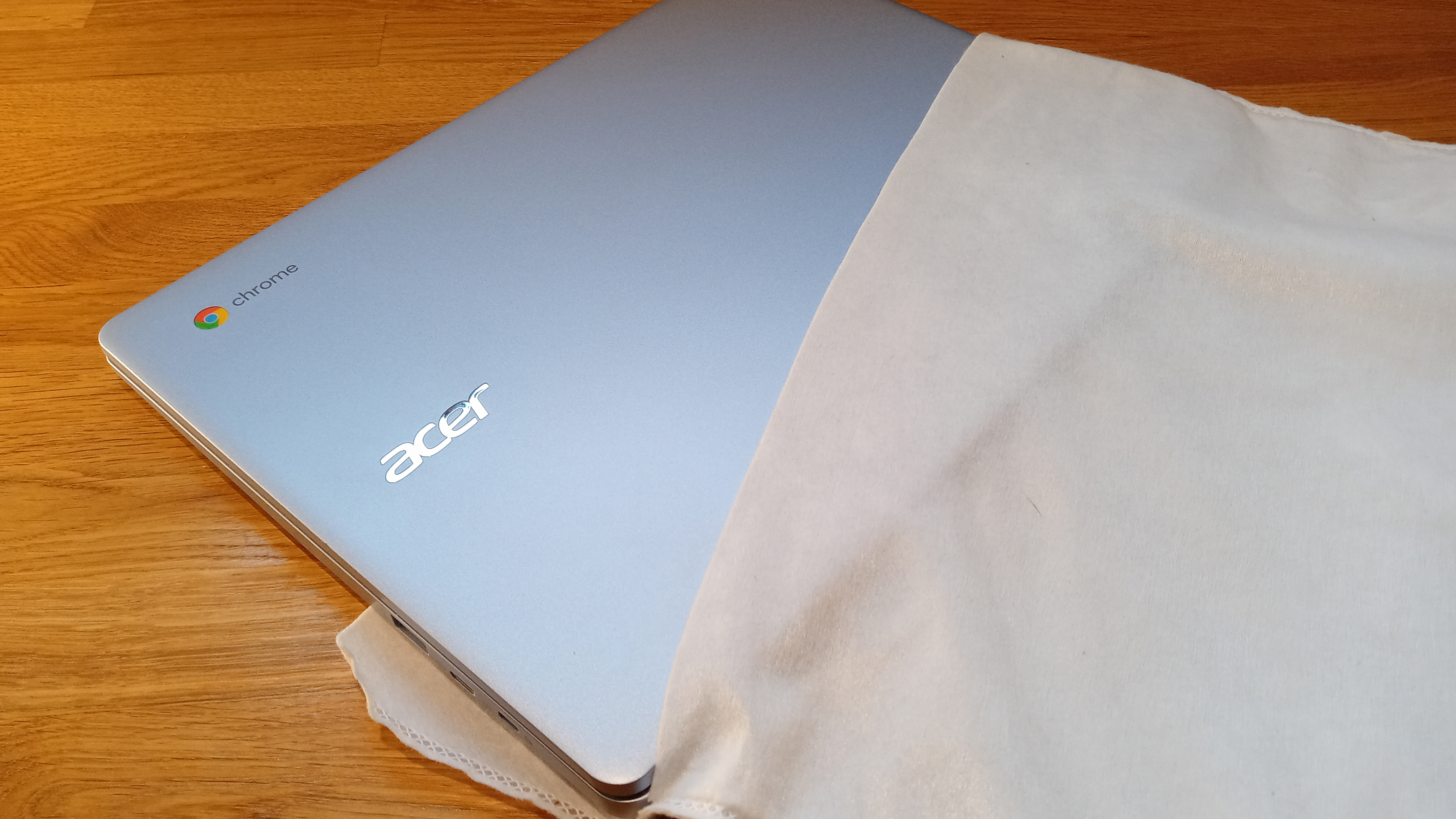
The beauty of Chromebooks is you really don't need anything other than a good internet connection to set them up. This means in the Acer Chromebook 314 box you get a power cable and that's pretty much it (it does come in a soft but hardly durable slip case).
All the heavy lifting is done by the Google OS. Simply open the lid, connect your Google account, or set up a new one, and away you go – the process takes less than 10 minutes to run through and this laptop will boot-up from shutdown in under eight seconds.
Daily design news, reviews, how-tos and more, as picked by the editors.
The simplicity of using a browser OS over a standard Windows laptop can take some getting used to; everything runs in the cloud and most apps are run as Chrome browser attachments and shortcuts. There's no 'desktop' as such, with everything run through your cloud-based Google Drive.
Acer Chromebook 314 review: design
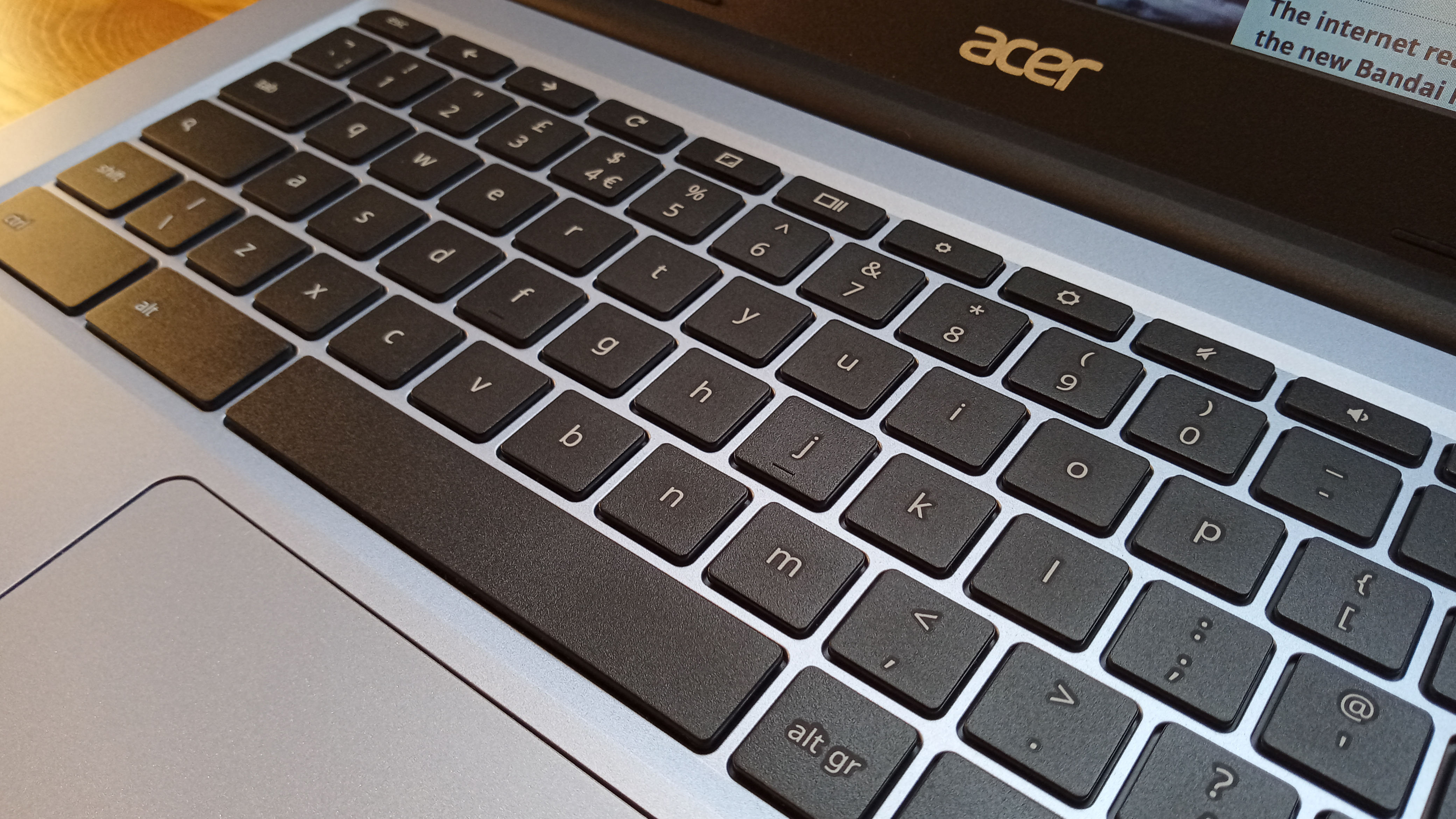
The Acer Chromebook 314 is the size and feel of a small PC laptop, and thankfully just a little larger than a notebook. Finished in metallic silver, this Chromebook feels splashy and gives the impression of an aluminium finish, even though it's not, the Acer Chromebook 314 is all-plastic.
The overall appeal of the Acer Chromebook 314 is of a mid-priced PC laptop. Its dimensions of 12.8 x 9.1 x 0.78 inches (32.5 x 23.1 x 2 cm; W x D x H) ensure a comfortable typing position, with room for your wrists to rest. But this larger size and moulding comes with some downsides.
The form of this laptop-like Chromebook is nice in the hand, but it's a little weighty compared to the more powerful touchscreen Acer Chromebook Spin 713 (1.7kg and 1.3kg respectively). There's a bulk feel to this Chromebook.
The main body of our test model is actually slightly skewed and off-kilter, meaning it has a distinct wobble
It's hard to tell where this weight comes from, given the all-plastic Acer Chromebook 314 is even heavier and chunkier than the aluminium Lenovo ThinkPad C13 Yoga Chromebook (my preferred non-Google Chromebook). It's one of the design choices that reminds me this is at the cheaper end of the Chromebook scale.
Likewise, the plastic finish is a little cheap. The main body of my test model is actually slightly skewed and off-kilter, meaning it has a distinct wobble when placed on a flat surface. The rear rubber feet sit firm but the front left side is fractionally off the surface. Coupled with a clicky tracking pad and there's a sense some corners have been cut to bring the price down.
Thankfully the keyboard itself is robust and firm to the touch, and will clearly last a good workout. This is where the Acer Chromebook 314 comes into its own, within this price bracket (RRP is $249.99 / £249.99). This is a workhorse Chromebook that will take a hit or two, during my test I hammered the keyboard and it never failed me. Note, this is a 'raised' keyboard, so if you're used to the soft touch or quiet keyboards of higher-end laptops it takes some getting used to.
Acer Chromebook 314 review: performance
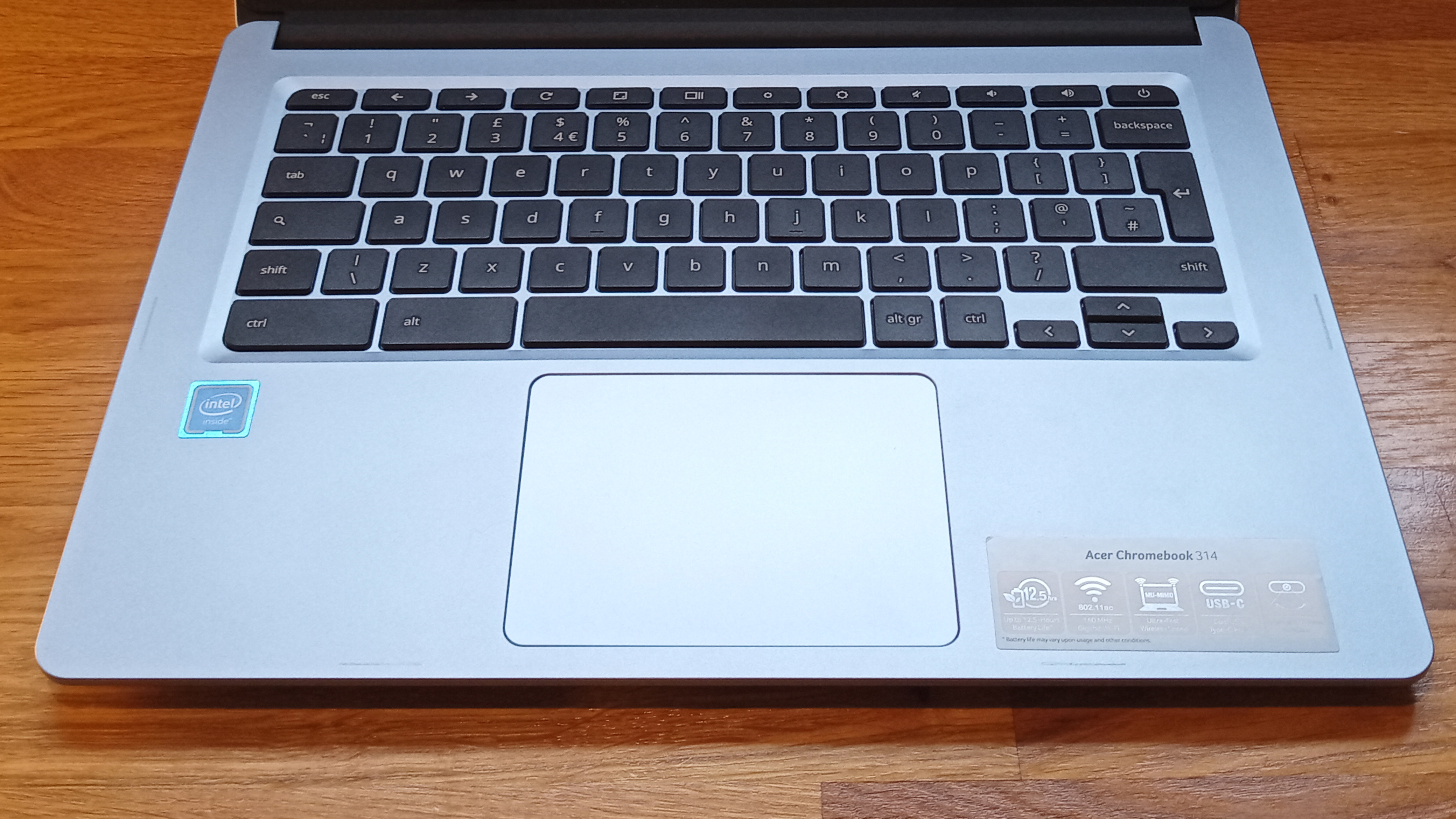
For this review I spent a week with the Acer Chromebook 314 testing it with some basic art apps, such as the browser-based Sketchpad and running the plethora of streaming services you'd expect to use, such as Netflix and Amazon Prime Video. I also made use of Google's assortment of office apps, such as Google Sheets and Google Docs.
The screen is decent, you get a 14-inch panel framed inside a thick black bezel with a camera at the top. The design is neat and uncluttered, but I have some qualms over the brightness and quality, particularly if you're using the Acer Chromebook 314 for creating artwork. The 1366 x 768 pixel dimension is effectively 720p, which is okay at 14-inches for streaming video but is found wanting for more interesting or serious visual tasks.
There's a heavy anti-glare, matt finish covering the screen (courtesy of the ComfyView Matte finish). This is great for tasks such as writing, noting or blogging and in fact I found watching video good too, but again if you want to work with images and need to see true colours this isn't the screen for you; the Acer Chromebook 314 touchscreen model with a Full HD screen would be a better fit in this price range.
Because this model of Acer Chromebook 314 doesn't have a touchscreen I linked an Intangbo Pablo tablet to the laptop. In its favour this machine isn't short of ports, and sits them nicely in parallel – a USB-C and a USB-A port are placed either side of the keyboard. While I found the USB-A ports a little stiff, the USB-C are perfect, enabling fast (up to 5Gbps) connectivity and device charging.
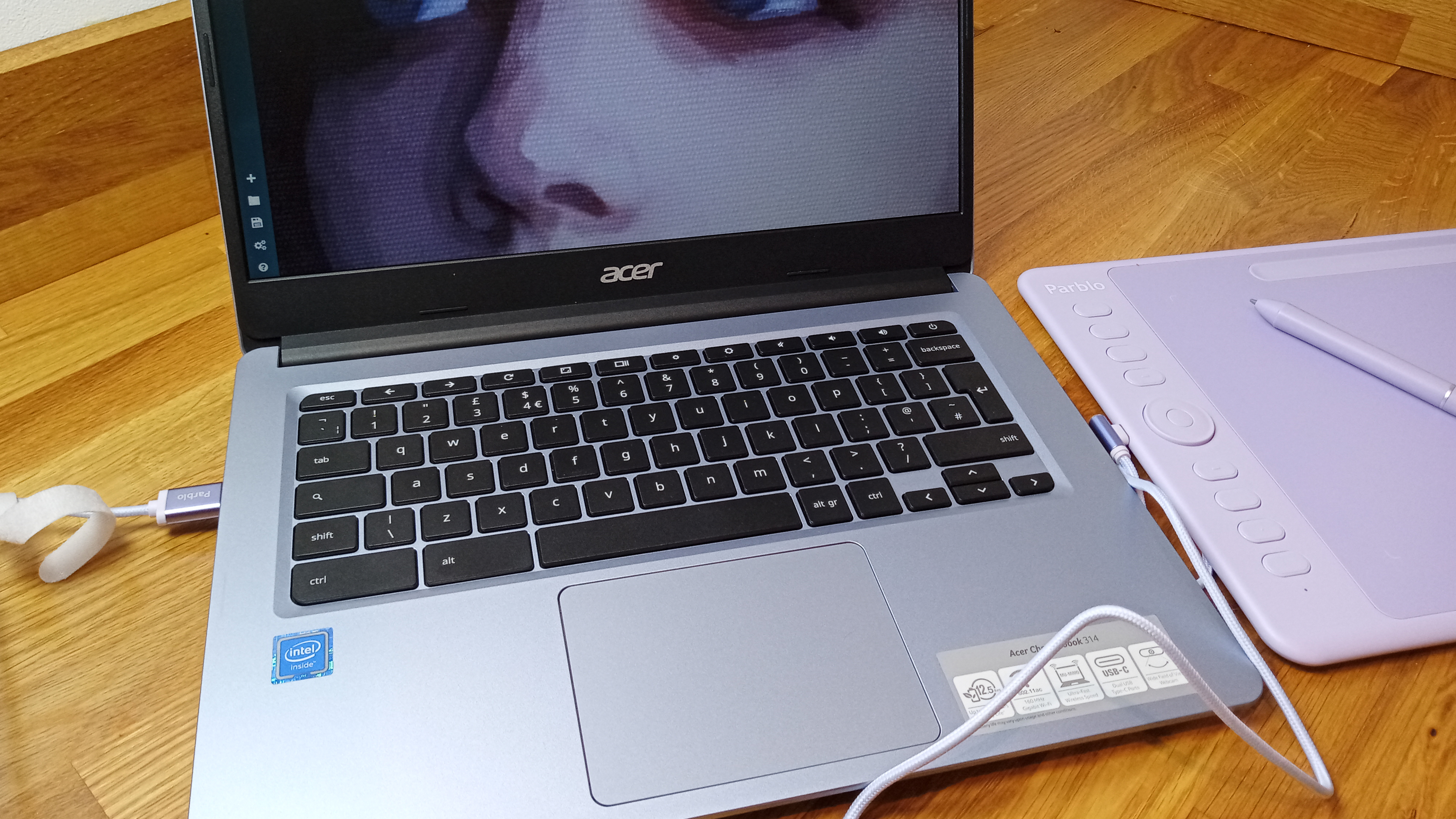
Where the screen size and Chrome OS really comes into its own is in regular tasks such as writing, browsing the web and booking and taking part in video calls. You can easily have multiple docs and tabs open with no slowdown. Google has come a long way in recent years and its spread of office tools is equal to Microsoft, and this is a strength of a cheap and approachable laptop like the Acer Chromebook 314 – it's a good all-rounder for student life and costs significantly less than the best Windows laptops.
While the Acer Chromebook 314 performed well on everyday tasks it's worth noting this isn't the most powerful Chromebook on the market. When running a Jetstream 2 benchmark, which combines a variety of JavaScript and Web Assembly benchmarks to see how well a system handles heavier workloads, we noticed the Acer Chromebook 314 is fairly average. It scored an overall Jetstream 2 benchmark of 48.9, while our ageing Google Pixelbook (Intel Core i5, 8GB) scored 77.5.
I also used Mozilla's Kraken benchmark to test the Acer Chromebook 314's browser speed. Acer's laptop scored 2349.8ms, which is okay. By comparison our older Google Pixelbook scored 1378.9ms. As further content, my Apple Macbook Pro (2019) rated 1013ms. As a rule, the lower the number the better the performance. It's also worth noting the Acer Chromebook 314 is around $750 / £750 and $500 / £500 less than these other laptops, respectively.
| Row 0 - Cell 0 | Acer Chromebook 314 | Google Pixelbook | Apple MacBook Pro (2019) |
| Jetstream 2 | 48.9 | 77.5 | 121.6 |
| Kraken | 2349.8ms | 1378.9ms | 1013ms |
Behind these stats, in practice the Acer Chromebook 314 is a joy to pick up and use. The eight second boot-up speed impresses and better still you can shut down the lid and reopen and not lose any work, and the laptop restarts in under a second. Again, the beauty of a cloud-based OS means all your work is constantly saved.
One thing to note, however, is the drawback to not having a touchscreen. On a PC laptop a touchscreen is a novelty, on a Chromebook it's becoming more and more essential. Touchscreen Chromebooks enable you to download and use all Android apps, while non-touchscreen laptops like this Acer Chromebook 314 model I'm testing will struggle with every app.
Acer Chromebook 314 review: battery life
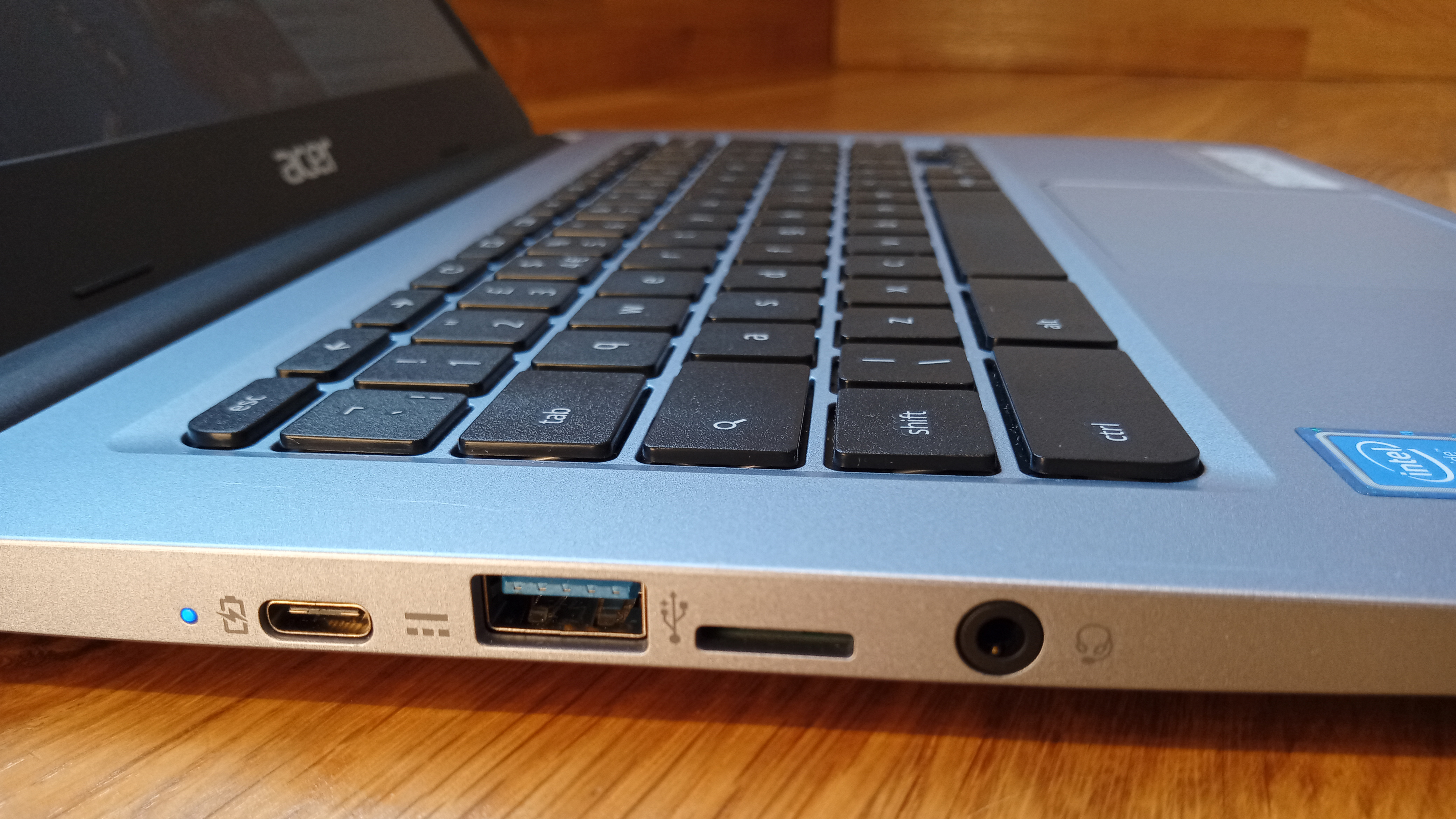
While I have some issues with the Acer Chromebook 314 its battery life isn't one of them. To put it to the test I streamed the third season of Snowpiercer, just under ten hours of video, with brightness and audio at 50%, and it managed the whole run of icy Sean Bean nonsense. Expect to get around 13 hours out of one full charge, which is on the mark for what Acer promises.
If you're working and not spending your days watching Netflix then this equates to two days of constant use, which is great if you're heading on a long journey or remote working. That time is sapped a little more with more devices attached, for example I hooked up the Intangbo Pablo drawing tablet and a second screen, but you're still getting 10+ hours out of this laptop.
Even if the battery dies, as mentioned the Acer Chromebook 314 has enough ports to support fast-charging over USB-C (it'll go from zero to full charge in around two hours).
Acer Chromebook 314 review: price
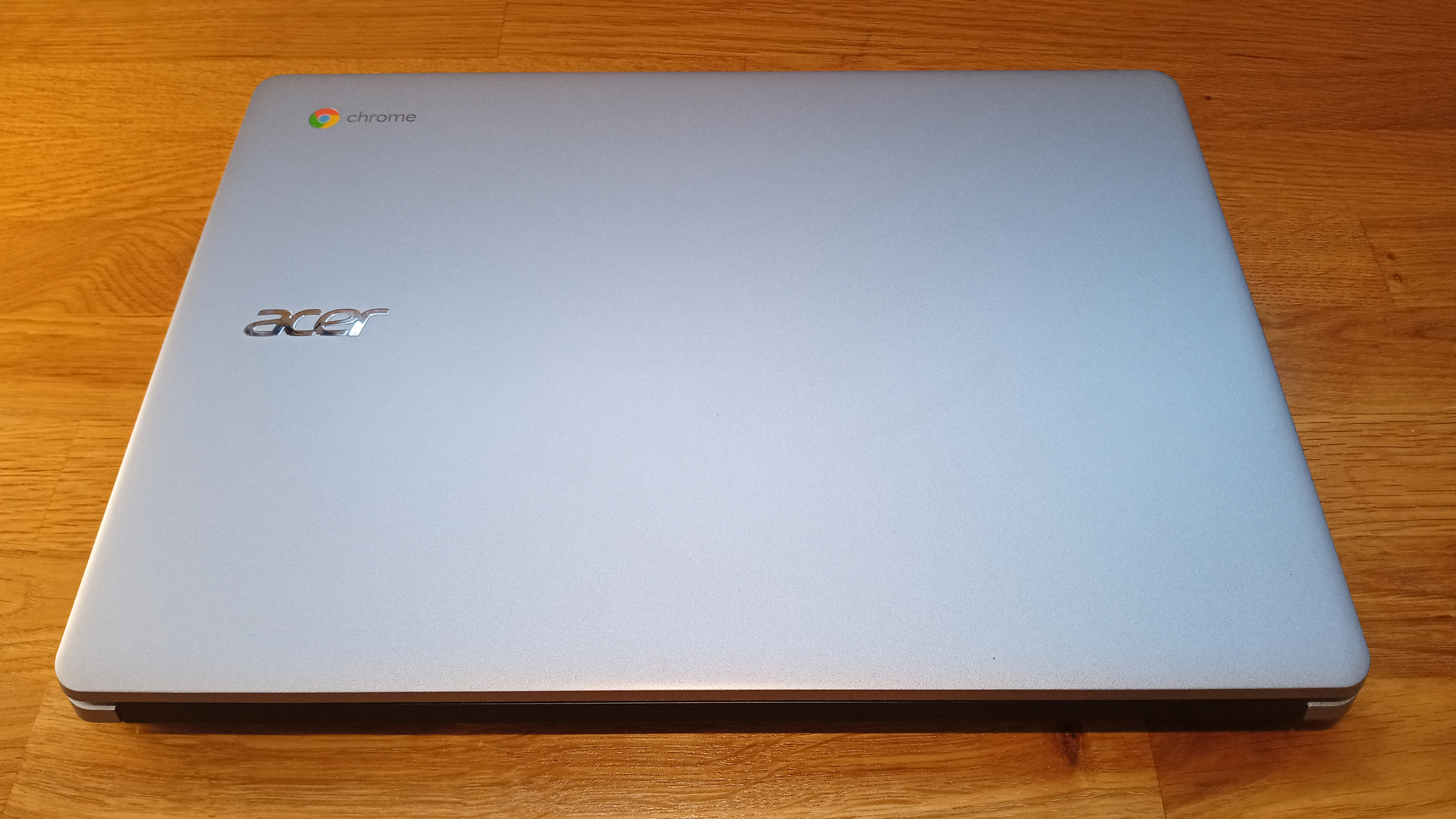
The Acer Chromebook 314 sits at the lower end of the Chromebook market, its RRP is $249.99 / £249.99 but you can expect to pay far less (closer to $179.99 / £199 on Amazon and Acer has regular 30% discounts).
It's worth checking the version you're looking at too. Here I'm testing the 32GB flash memory model but there is a slightly more expensive 64GB flash memory version, too. Given how this laptop is designed to store most files in the cloud you don't need a huge amount of memory. However, more Android apps are using on-device storage so you may want to pay a little extra. Note, the Acer Chromebook 314 has a slot for a micro SSD card, which could work out cheaper.
I would say it's worth considering the Acer Chromebook 314 touchscreen model; its Full HD screen will greatly broaden the appeal and use of this laptop. A touchscreen model is around $50 / £50 more expensive than the version I'm testing, so keep this in mind as it's still cheaper than a comparable Windows PC or Mac.
- Read more:
out of 10
The Acer Chromebook 314 is easy to use, has a great battery life and is more than capable of running multiple apps. This is a great Chromebook for students as it's durable and Google's suite of office apps are excellent. It can be a found wanting for art projects, and you may want to consider upgrading to the touchscreen model. As an entry level Chromebook, it's worth a look.

Ian Dean is Editor, Digital Arts & 3D at Creative Bloq, and the former editor of many leading magazines. These titles included ImagineFX, 3D World and video game titles Play and Official PlayStation Magazine. Ian launched Xbox magazine X360 and edited PlayStation World. For Creative Bloq, Ian combines his experiences to bring the latest news on digital art, VFX and video games and tech, and in his spare time he doodles in Procreate, ArtRage, and Rebelle while finding time to play Xbox and PS5.
